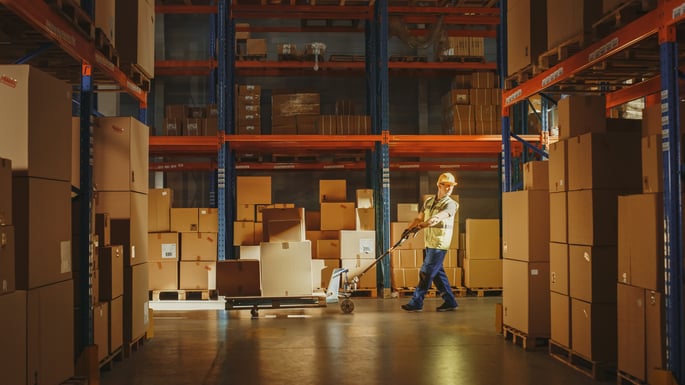A smart reverse logistics solution can reduce costs and improve profitability.

There are many reasons to return an item to where you bought it. Maybe it doesn’t fit, it’s not what you expected, or it needs repair. Since COVID, we’ve all become more accustomed to “buying and trying” with the knowledge that we can always send back the things we don’t need or want, with no questions asked.
That’s why flexible return policies became a critical sales tool for many companies that switched to e-commerce or buy-online-pickup-in-store strategies during the pandemic. But now it looks like the era of free returns is coming to a close.
That's the opinion of Steve Rop, chief operating officer at goTRG — a firm that processes returns for the likes of Walmart, Target, Home Depot, and other large retailers. In a recent Forbes article, he said, "It's not sustainable for retailers and DTC brands to continue to absorb the costs for returns. It all comes down to economics."
Why return management matters
The National Retail Federation estimates that returns of merchandise purchased online in 2020 totaled $106 million for every $1 billion in retail sales. That's 10% of every sales dollar, not counting the costs of shipping, processing, and restocking. Despite this, most logistics experts will argue that returns are essential to the customer journey.
Returns management is the art and science of planning and executing return policies and procedures in the best interests of customers and your bottom line.
Buyers want convenience, and of course, they appreciate "free." Eighty-four percent of consumers polled by a leading returns management software firm said the returns experience directly influences their opinion of a retailer and that free returns are often the deciding factor when choosing between online retailers.
Meanwhile, cost reduction is the number one priority for most sellers, followed closely by customer satisfaction. Many merchants avoid return shipping expenses by encouraging their customers to buy-online-return-in-store-for-free, which can be faster and easier than repackaging for return by mail. They're also aware that consumers who return to the store with unwanted items often buy something else.
According to our research, managing returns is not among the top five priorities for a third of retailers--and a quarter of the retailers surveyed don't do so efficiently and effectively. More important, retailers tend to think more about shipping and logistics costs than about optimizing the profitability of returns. - McKinsey & Co. May 2021
BTB returns require industry-specific knowledge
Consumer returns are increasingly costly, but industrial returns are a full-time operation for manufacturers and after-market parts distributors.
Take pharmaceuticals, for instance. As the industry moves rapidly towards personalized medicine and direct-to-patient delivery, suppliers are handling exponentially more packaging. They must also comply with regulatory requirements to track every shipment that goes out and account for every empty prescription bottle that comes back for a refill. A smarter supply chain could help cut production lead times and sellers could carry significantly smaller inventories while keeping potentially dangerous substances out of the wrong hands.
The aviation industry has its own unique set of challenges when it comes to moving thousands of parts, ranging from as small as a single bolt to as large as an airplane wing. Airplane manufacturers and after-market parts distributors must document, track, and disposition returned items quickly and accurately to recapture unrealized revenue and reduce write-offs.
Cura's aviation advisor Wayne Trzeciak points out that specific sales transactions may require the buyer to return a failed part to the seller. The seller, in turn, will either hold that part or send it out to be repaired and returned to inventory. This process, known as "core management," provides a healthy supply chain to support future sales. Core management can be a significant issue in aviation, mostly due to weak reverse logistics processes.
- The first part requires the seller to have a robust sales and return management system that enables a seamless and intuitive return experience for the buyer. This system should also be able to promptly issue a credit when applicable.
- The second part relies on integrating warehouse systems with the seller's systems so returned parts can be promptly identified, and decisions on whether to scrap, hold, or send the part out to be fixed can be made quickly.
Very large suppliers often employ sophisticated software to manage reverse logistics. But smaller companies can't always afford the physical assets and human resources needed to optimize the documentation and warehousing of returned goods. For these businesses, finding a reliable third-party logistics partner can be the fastest way to implement a better return management strategy.
About Cura
Cura Group offers a variety of pricing models and custom warehousing solutions to help small and medium-sized aviation specialists – and other small to medium retail, manufacturing, and distribution businesses – stay competitive.
Contact us to find out how we design and operate efficient turn-key fulfillment solutions to handle sales and returns for any business, exactly where you need us, at a price that fits your budget.
Related Blog Posts:
